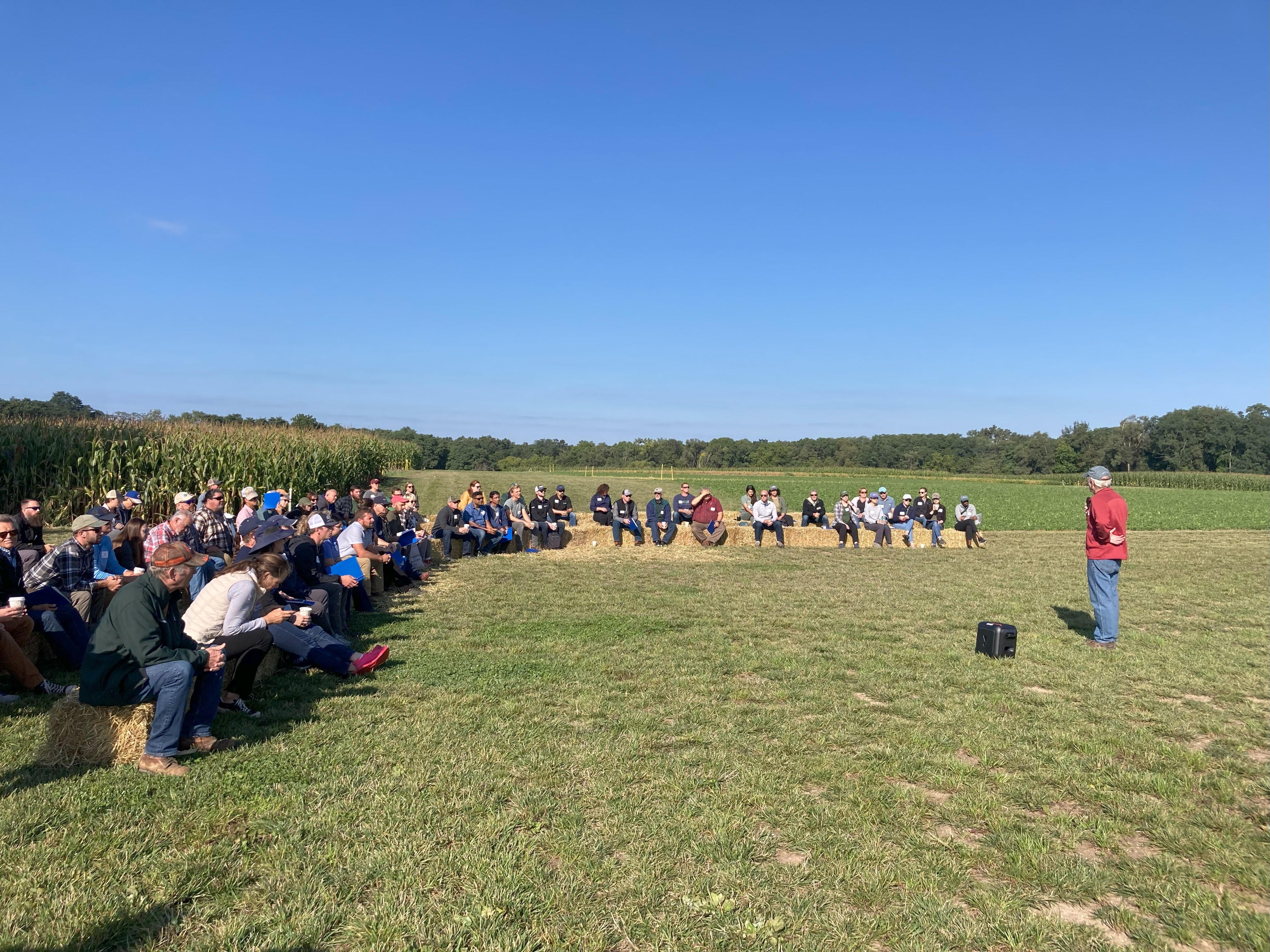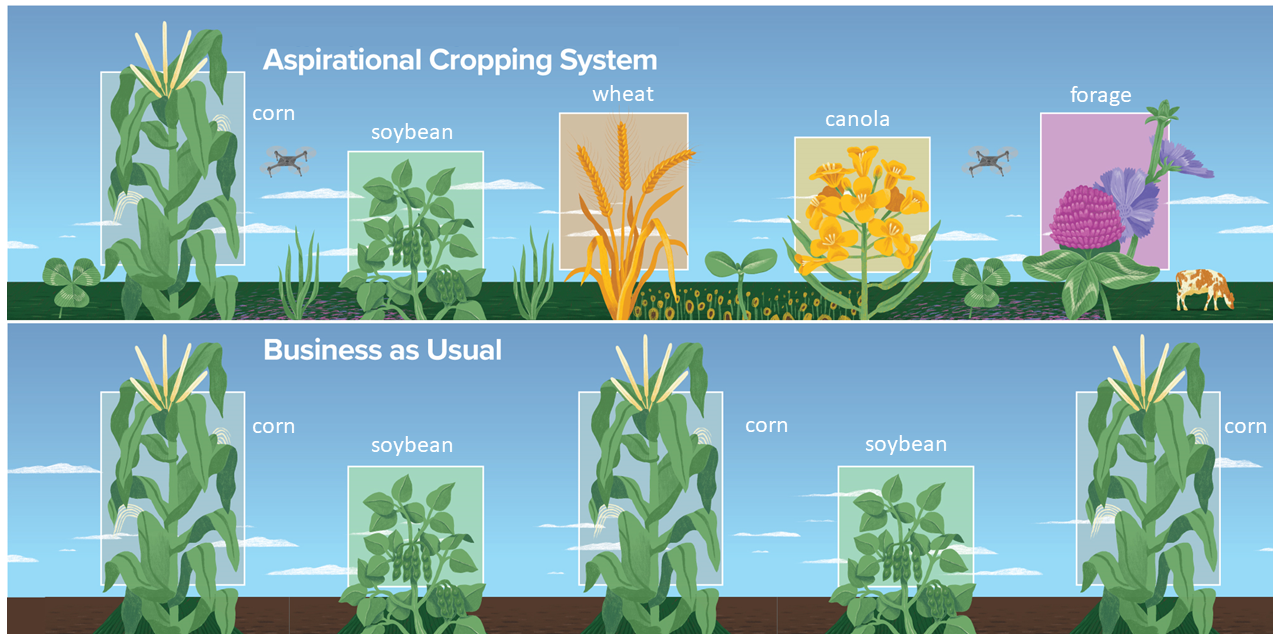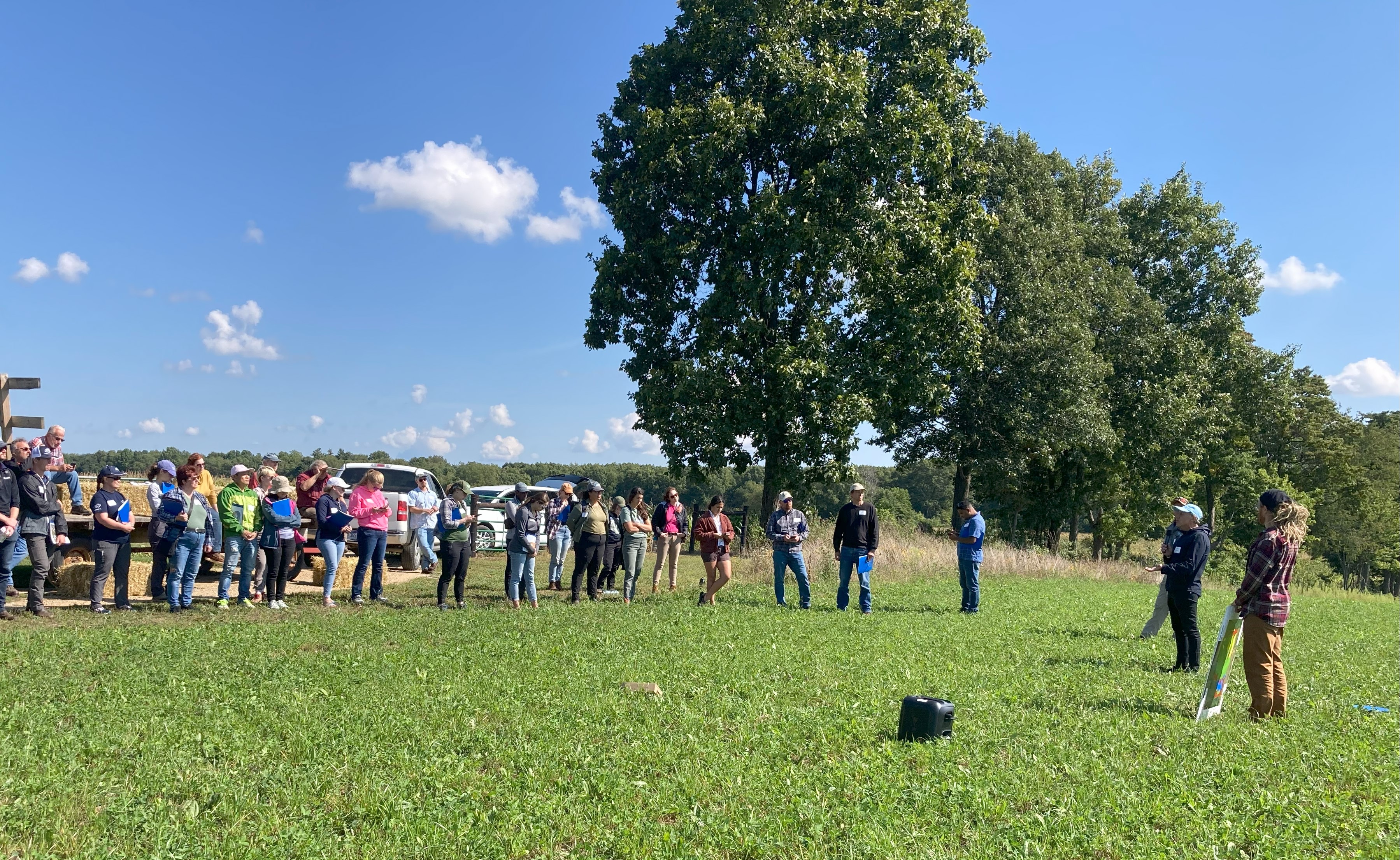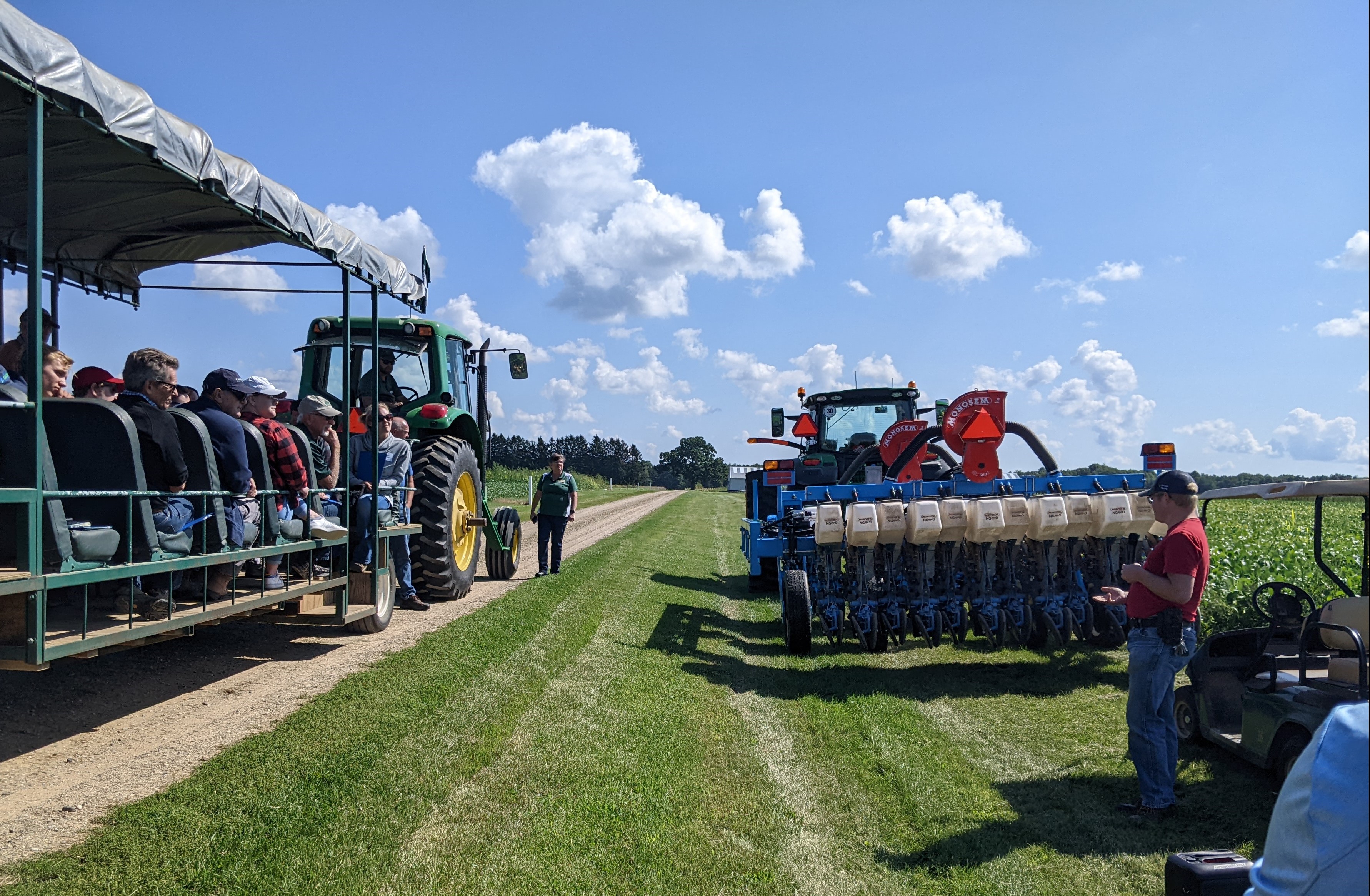On September 15th, 2023, over 90 individuals gathered at Michigan State University’s Kellogg Biological Station (KBS) to learn about opportunities for creating a more sustainable agricultural system, one for the future.
The KBS Long-Term Agroecosystem Research (LTAR) is funded by the USDA and in 2020 joined a network of 18 sites across the country to develop strategies to build profitable, as well as socially and environmentally sustainable agricultural systems. KBS LTAR joins a sister program, Long-Term Ecological Research (LTER), which has been researching the environmental impact of conservation agricultural practices for over thirty years. Just in its infancy, the agricultural experiments at KBS LTAR started in 2022 and this was the first of hopefully many free, annual field days co-hosted by KBS LTAR and MSU Extension.

At the field day, LTAR director, Dr. Phil Robertson, emphasized that stakeholder engagement and aspirational, adaptive thinking are central to the project. The “Common Experiment”, which is replicated across the national LTAR network, seeks to identify trade-offs between an agricultural system that represents prevailing practices, termed “Business As Usual”, and a system that is “Aspirational” and reflects what agricultural stakeholders visioned that Michigan row crop agriculture should look like in 30 years. Dr. Tayler Ulbrich, Associate Director for Engagement, and Laura Campbell, chair of the KBS LTAR Stakeholder Advisory Board and Senior Conservation and Regulatory Relations Specialist for Michigan Farm Bureau, shared that working with external partners to ensure that the research is meaningful on-the-ground is both a unique opportunity of this project, as well as the key to success at the KBS LTAR.

Initial findings presented at the KBS LTAR showcased several key lessons and novel research areas, including:
- In the first year of the experiment, profit for the corn and soybean crops in the Aspirational system was greater or equal to that of the Business-As-Usual, despite lower yields. Christine Charles, MSU Extension Educator for Regenerative Cropping Systems, shared that “it’s not too surprising given previous research that the first year of no-till production led to lower yields in the Aspirational system, but it’s informative to quantify the lower input costs, largely driven by no tillage, as well as lower fertilizer and seed costs”. (Aspirational corn per acre cost: $671 // Business as usual corn per acre cost: $758 & Aspirational soybean per acre cost: $298 // Business as usual soybean per acre cost: $416, click here to see the complete 2022 budget analysis)
- At the field day, participants could also see striking resilience to drought in the Aspirational system. The corn in the Aspirational system had a delayed start, still looking like pineapple plants in late June, due to a dry spring and initial competition from the previous forage crop. However, after July rains, the Aspirational corn looked visually healthier than the Business-As-Usual. Researchers will see how this plays out with yield and economics.
- Free-living beneficial nematodes respond to changes in land management after only one year, and may offer a faster way for farmers to evaluate soil health. Dr. Christine Sprunger highlighted that the KBS LTAR perennial forage crop and prairie strips had the greatest change in nematode communities. This result indicates that, unlike soil carbon stocks, which can take decades to change, biological indicators, like beneficial nematodes, may respond faster to management changes and, thus, help farmers know more
quickly how their management is affecting soil health. - Precision Technology offers an opportunity for farmers to manage field variability and save money by either reducing inputs or shifting to conservation zones or prairie strips in consistently low-profitability areas.
- KBS LTAR Crop Consultant, Jason Stegink noted that it is important to use trials with visual inspections, tissue samples, and imagery to calibrate and verify precision applications.
- Historical yield data and satellite/drone imagery are used by Dr. Bruno Basso’s Lab to identify zones in a field that consistently under yield. Ruben Ulbrich, a GIS specialist in the Basso Lab, used these maps to help create prescriptions for variable rate nitrogen and seed applications, as well as to identify where to install prairie strips, or conservation zones with perennial, pollinator-friendly plants. Ulbrich shared that “these efforts can help farmers save money and reduce greenhouse gas emissions by not applying fertilizer to consistently low-yielding areas.” You can read more about how the LTAR implemented prairie strips here, and connect with the Basso Lab by emailing Rich Price, Basso Lab Manager (email: priceri1@msu.edu).

-
- Tvisha Martin, PhD student in Dr. Sprunger’s lab, further emphasized that the benefits of prairie strips go beyond profitability. These perennial, flowering habitats play an important role in building soil health, supporting soil biology, and recruiting pollinators to our agroecosystems.
- Finally, researchers discussed how conservation practices (e.g. cover cropping and no-till) and greater rotational diversity can provide long-term benefits for soil health, moisture retention and drainage, and nutrient cycling, but that these practices also come with new challenges. The KBS LTAR is working to identify these challenges to share more realistic expectations to farmers interested in adopting these practices.
- Dr. Brook Wilke, Associate Director for Science and Agronomy at the LTAR, highlighted novel cover crops being evaluated to optimize nitrogen fixation and cover crop mixtures (such as alternating rows of radish and red clover) that provide optimum benefit for the next crop in the rotation.
- Eric Anderson with MSU Extension discussed challenges associated with no-till planting soybeans into cover crops (a.k.a planting green), particularly issues with small rodents, like voles, eating soybean seedlings. Anderson highlighted that one solution is to terminate the cover crop at least two weeks before crop planting to minimize the risk.
- Dr. Manni Singh’s team highlighted the innovations they are studying to improve profitability in wheat and soybean systems. They aim to improve planting efficiency and accuracy by using early planting, precision seed spacing, double cropping, and efficient planting methods.

Overall, the day was a huge success, and participants provided great insights about new research avenues the LTAR should pursue.
The KBS LTAR intends to adapt and respond to the times, and re-envision what an “Aspirational” agricultural system looks like every five years. This process will involve significant input from local farmers and agricultural professionals. Feel free to reach out if you have ideas for the KBS LTAR, or if you’d like to try some of these practices on your farm. Finally, stay tuned for our field day next fall!



 Print
Print Email
Email
